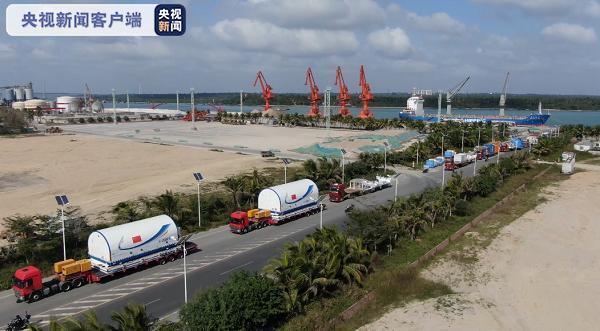China's first space station module prepares for lift-off

The core module of space station and the Long March 5B heavy-lift carrier rocket tasked with launching it have arrived in the Wenchang Space Launch Center in Hainan province. [Photo/CCTV]
China plans to launch the core module of its space station before the end of June, starting the construction of the nation's largest space-based asset, according to the China Manned Space Agency.
The 20-metric-ton core module and the Long March 5B heavy-lift carrier rocket tasked with launching it have arrived in the Wenchang Space Launch Center in Hainan province, the agency said in a statement on Thursday morning, adding that four groups of astronauts have been selected for the space station's construction and are undergoing training.
The statement said that China is determined to open this station to international cooperation in science and technology. Chinese scientists and their counterparts from the United Nations have selected the first batch of scientific experiments proposed by foreign researchers that can be carried out inside the station. They are currently working on the implementation for those cooperative programs, according to the agency.
The agency also noted that it is considering plans for China's manned lunar exploration program.
China's most sophisticated space endeavor, the multimodule space station, named Tiangong, or Heavenly Palace, will be mainly composed of three components - a core module attached to two space laboratories - with a combined weight of more than 90 tons.
The core module, named Tianhe, or Harmony of Heavens, is 16.6 meters long and has a diameter of 4.2 meters. It has three parts - a connecting section, a life-support and control section and a resources section. It will be central to the space station's operations, given that astronauts will live there and control the entire station from inside. The module will also be tasked with hosting scientific experiments.
The entire station is expected to become fully operational next year and is set to operate for about 15 years, program planners have said.
上一篇:China releases high-resolution Mars images from Tianwen-1 probe